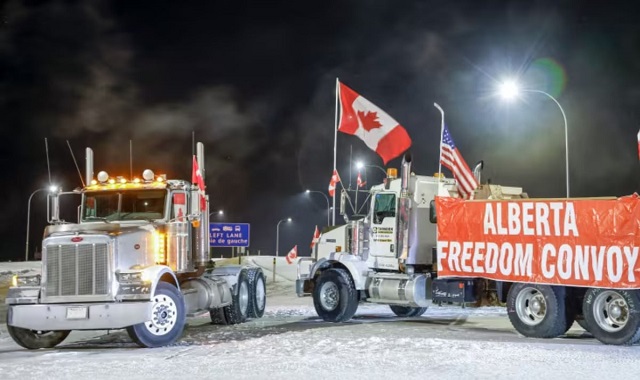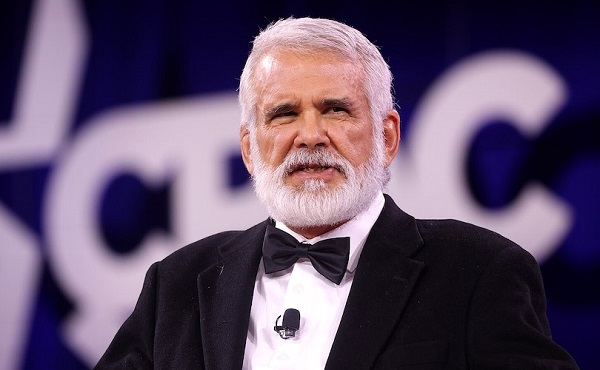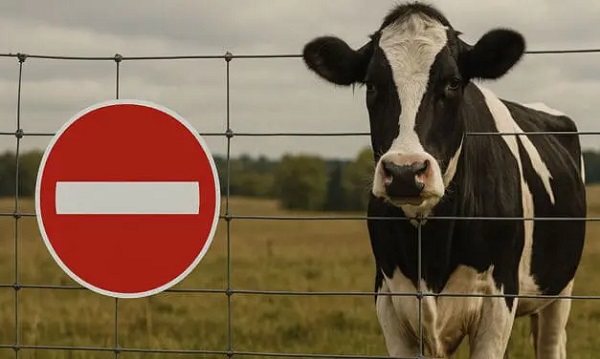Alberta
What Was The Dangerous Purpose?

From the Frontier Centre for Public Policy
By Ray McGinnis
During the trial, RCMP officers described what they found as “pipe bombs” in the Tony Olienick’s Claresholm, AB, property after his arrest. They alleged that these were to be used for a dangerous purpose. During the Coutts Blockade, the “explosive” device remained on Olienick’s property, a two-hour drive away.
On August 2, a Lethbridge jury found Chris Carbert and Tony Olienick not guilty of the most serious charge of conspiracy to commit murder of police officers. However, both were found guilty of possession of weapons for a dangerous purpose.”
After the verdict, Newsweek reported “documents obtained under an Access to Information and Privacy Act request showed that the RCMP had been profiling protesters by running license plates through databases, then focusing in on those who possessed federal gun licenses.”
Possession of a Weapon for a Dangerous Purpose
Olienick’s lawyer, Marilyn Burns told this reporter of the charge, “I have not found a case where the charge of possession of a weapon for a dangerous purpose has not been twinned with an act of murder, violence.” This section of the Canadian Criminal Code, she explained, “has two categories: “dangerous purpose for the public peace” or for “another criminal act.” The charge brought by the Crown against Carbert and Olienick was for “possession of a weapon for a dangerous purpose” being “dangerous for the public peace.”
Tony Olienick didn’t have any weapons while he was standing outside of Smugglers Saloon at the time he was arrested. He had a rifle and a 22, and had moved them from his truck to the trailer. There were several guns in the trailer Chris Carbert was sleeping in at the time of his arrest. However, when he came out of the trailer to be arrested, he was unarmed. During the trial, it was confirmed it’s not illegal to have firearms in your camper trailer. It’s legal to have firearms for self-defence in your camper trailer to defend yourself against a civilian intruder. No guns were seen in public. Carbert, Olienick (and Lysak) snuck the guns into the trailer when no one saw them to make it safe – so nothing would happen accidentally to someone in view.
What was the Dangerous Purpose?
Chris Carbert’s lawyer, Katherin Beyak, summarized, “The evidence wasn’t there for Chris needing to have a firearm for self-defence at the blockade, that evidence just didn’t come forward. That’s why I’m trying to figure out what the dangerous purpose was. Other than, perhaps, the jury didn’t think there was a valid purpose for having a firearm at the protest. I don’t know, and we can’t ask them (the jury).” Asked about the jury decision, Beyak said the jury decision may have been “more of a statement that this was supposed to be peaceful, and you shouldn’t have had firearms there.”
The message from this verdict to Canadians may mean even if you are unarmed, you shouldn’t have firearms in the vicinity of a municipality where there is a protest.
Explosive Witness Testimony
The jury also found Tony Olienick guilty of possession of explosives for a dangerous purpose.
Brian Lambert, a sandstone quarry owner and colleague of Olienick, testified at the trial. He described an explosive device, nicknamed “firecrackers” in the business, he observed Olienick use years ago. Lambert testified Tony Olienick use these “firecrackers” to dislodge stone that would get sold and repurposed for construction. Olienick’s father served as a peacekeeper in the Canadian Armed Forces in Cypress. A stone quarry in southern Alberta occasionally got drill bits stuck in the stone. Olienick’s father created an explosive device with plumbing pipe, ordinary gunpowder, and a fuse that can be purchased at a hobby store. It was used to dislodge drill bits from a stone. After he died, the “firecracker” device was gathered up by Tony Olienick along with other items from his father’s estate. The son moved it onto his property. While the late Mr. Olienick had a permit to use the device, his son didn’t renew the permit for the explosive device.
Marilyn Burns, lawyer for Tony Olienick, relates the RCMP went through everything to find that device in a pile of other belongings of her client’s late father. During the trial, RCMP officers described what they found as “pipe bombs” in the Tony Olienick’s Claresholm, AB, property after his arrest. They alleged that these were to be used for a dangerous purpose. During the Coutts Blockade, the “explosive” device remained on Olienick’s property, a two-hour drive away.
A Warning
One takeaway from the jury verdict: if you go to a protest, make sure any explosive device you have at your property has a permit. Otherwise, even if the device in question is a two-hour drive away, you could be found guilty of possession of explosives for a dangerous purpose.
This commentary is second of a three part series. Read part one here, and three here.
Ray McGinnis is a Senior Fellow with the Frontier Centre for Public Policy. His forthcoming book is Unjustified: The Emergencies Act and the Inquiry that Got It Wrong
Alberta
Alberta Premier Danielle Smith Discusses Moving Energy Forward at the Global Energy Show in Calgary

From Energy Now
At the energy conference in Calgary, Alberta Premier Danielle Smith pressed the case for building infrastructure to move provincial products to international markets, via a transportation and energy corridor to British Columbia.
“The anchor tenant for this corridor must be a 42-inch pipeline, moving one million incremental barrels of oil to those global markets. And we can’t stop there,” she told the audience.
The premier reiterated her support for new pipelines north to Grays Bay in Nunavut, east to Churchill, Man., and potentially a new version of Energy East.
The discussion comes as Prime Minister Mark Carney and his government are assembling a list of major projects of national interest to fast-track for approval.
Carney has also pledged to establish a major project review office that would issue decisions within two years, instead of five.
Alberta
Punishing Alberta Oil Production: The Divisive Effect of Policies For Carney’s “Decarbonized Oil”

From Energy Now
By Ron Wallace
The federal government has doubled down on its commitment to “responsibly produced oil and gas”. These terms are apparently carefully crafted to maintain federal policies for Net Zero. These policies include a Canadian emissions cap, tanker bans and a clean electricity mandate.
Following meetings in Saskatoon in early June between Prime Minister Mark Carney and Canadian provincial and territorial leaders, the federal government expressed renewed interest in the completion of new oil pipelines to reduce reliance on oil exports to the USA while providing better access to foreign markets. However Carney, while suggesting that there is “real potential” for such projects nonetheless qualified that support as being limited to projects that would “decarbonize” Canadian oil, apparently those that would employ carbon capture technologies. While the meeting did not result in a final list of potential projects, Alberta Premier Danielle Smith said that this approach would constitute a “grand bargain” whereby new pipelines to increase oil exports could help fund decarbonization efforts. But is that true and what are the implications for the Albertan and Canadian economies?
The federal government has doubled down on its commitment to “responsibly produced oil and gas”. These terms are apparently carefully crafted to maintain federal policies for Net Zero. These policies include a Canadian emissions cap, tanker bans and a clean electricity mandate. Many would consider that Canadians, especially Albertans, should be wary of these largely undefined announcements in which Ottawa proposes solely to determine projects that are “in the national interest.”
The federal government has tabled legislation designed to address these challenges with Bill C-5: An Act to enact the Free Trade and Labour Mobility Act and the Building Canada Act (the One Canadian Economy Act). Rather than replacing controversial, and challenged, legislation like the Impact Assessment Act, the Carney government proposes to add more legislation designed to accelerate and streamline regulatory approvals for energy and infrastructure projects. However, only those projects that Ottawa designates as being in the national interest would be approved. While clearer, shorter regulatory timelines and the restoration of the Major Projects Office are also proposed, Bill C-5 is to be superimposed over a crippling regulatory base.
It remains to be seen if this attempt will restore a much-diminished Canadian Can-Do spirit for economic development by encouraging much-needed, indeed essential interprovincial teamwork across shared jurisdictions. While the Act’s proposed single approval process could provide for expedited review timelines, a complex web of regulatory processes will remain in place requiring much enhanced interagency and interprovincial coordination. Given Canada’s much-diminished record for regulatory and policy clarity will this legislation be enough to persuade the corporate and international capital community to consider Canada as a prime investment destination?
As with all complex matters the devil always lurks in the details. Notably, these federal initiatives arrive at a time when the Carney government is facing ever-more pressing geopolitical, energy security and economic concerns. The Organization for Economic Co-operation and Development predicts that Canada’s economy will grow by a dismal one per cent in 2025 and 1.1 per cent in 2026 – this at a time when the global economy is predicted to grow by 2.9 per cent.
It should come as no surprise that Carney’s recent musing about the “real potential” for decarbonized oil pipelines have sparked debate. The undefined term “decarbonized”, is clearly aimed directly at western Canadian oil production as part of Ottawa’s broader strategy to achieve national emissions commitments using costly carbon capture and storage (CCS) projects whose economic viability at scale has been questioned. What might this mean for western Canadian oil producers?
The Alberta Oil sands presently account for about 58% of Canada’s total oil output. Data from December 2023 show Alberta producing a record 4.53 million barrels per day (MMb/d) as major oil export pipelines including Trans Mountain, Keystone and the Enbridge Mainline operate at high levels of capacity. Meanwhile, in 2023 eastern Canada imported on average about 490,000 barrels of crude oil per day (bpd) at a cost estimated at CAD $19.5 billion. These seaborne shipments to major refineries (like New Brunswick’s Irving Refinery in Saint John) rely on imported oil by tanker with crude oil deliveries to New Brunswick averaging around 263,000 barrels per day. In 2023 the estimated total cost to Canada for imported crude oil was $19.5 billion with oil imports arriving from the United States (72.4%), Nigeria (12.9%), and Saudi Arabia (10.7%). Since 1988, marine terminals along the St. Lawrence have seen imports of foreign oil valued at more than $228 billion while the Irving Oil refinery imported $136 billion from 1988 to 2020.
What are the policy and cost implication of Carney’s call for the “decarbonization” of western Canadian produced, oil? It implies that western Canadian “decarbonized” oil would have to be produced and transported to competitive world markets under a material regulatory and financial burden. Meanwhile, eastern Canadian refiners would be allowed to import oil from the USA and offshore jurisdictions free from any comparable regulatory burdens. This policy would penalize, and makes less competitive, Canadian producers while rewarding offshore sources. A federal regulatory requirement to decarbonize western Canadian crude oil production without imposing similar restrictions on imported oil would render the One Canadian Economy Act moot and create two market realities in Canada – one that favours imports and that discourages, or at very least threatens the competitiveness of, Canadian oil export production.
Ron Wallace is a former Member of the National Energy Board.
-

 International16 hours ago
International16 hours agoIsrael’s Decapitation Strike on Iran Reverberates Across Global Flashpoints
-

 Business1 day ago
Business1 day agoTrump: ‘Changes are coming’ to aggressive immigration policy after business complaints
-

 Business1 day ago
Business1 day agoThe carbon tax’s last stand – and what comes after
-

 illegal immigration1 day ago
illegal immigration1 day agoLA protests continue as judge pulls back CA National Guard ahead of ‘No Kings Day’
-

 Alberta2 days ago
Alberta2 days agoOil prices are headed for a hard fall
-

 International1 day ago
International1 day agoPentagon agency to simulate lockdowns, mass vaccinations, public compliance messaging
-

 Health2 days ago
Health2 days agoRFK Jr. appoints Robert Malone, Martin Kulldorff, other COVID shot critics to overhauled CDC vaccine panel
-

 Business2 days ago
Business2 days agoOur addiction to dairy supply management is turning Canada into a trade pariah






